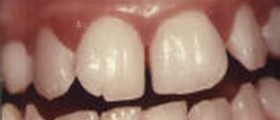
Hemophilia is a hereditary blood clotting disorder which mainly affects male population. There are two types of hemophilia, A and B.
Hemophilia A
Hemophilia A is the most common hereditary coagulation disorder which occurs due to the lack of coagulation factor VIII or reduction in its activity. Disorders of coagulation factors synthesis are caused by mutations in the structural gene on X chromosome. It mainly occurs in men and it is characterized by a lifelong tendency to bleeding. Bleeding may occur spontaneously or with minor injuries usually in the joints and muscles. This generally leads to degenerative changes and disability.Approximately one in 5000 males is born with hemophilia A. Hemophilia A mostly affects men, while women are (re)carriers of the disease. Women can become ill, but rarely do. Hemophiliac married to a healthy woman has healthy sons, while daughters transfer gene for hemophilia. Female carrier of hemophilia gene married to a healthy man has sons who have the same conditions to become healthy or sick, and daughters who may be healthy hemophilia carriers.
Hemophilia B
Hemophilia B is inherited in the same way as hemophilia A, but the frequency of its occurrence is 5 times smaller. It manifests on the same way as hemophilia A and only by blood tests is possible to determine the difference from hemophilia A. It is sometimes called Christmas disease after the surname of the first person who had this disease.Acquired Hemophilia
Acquired hemophilia is a spontaneous development of inhibitors on clotting factor VIII. It occurs in approximately one person per million. The cause of the inhibitors development is usually idiopathic (unknown), but may occur in connection with pregnancy, autoimmune diseases, use of certain medications, or cancer. Patients with acquired hemophilia come to the hospital because of serious spontaneous bleeding, which usually does not respond to FVIII therapy.Genetic tests can very reliably determine the carriers of hemophilia. If a pregnant woman is a carrier of hemophilia, it is necessary to determine fetal gender. If it is male it is necessary to by amniocentesis from umbilical cord take blood to determine the level of factor VIII coagulation.
Symptoms
Hemophilia bleeding occurs from childhood. Severity of disease is in direct proportion to the lack of factor VIII. It is characterized by bleeding in the large joints, muscles and soft tissues.Mild hemophilia is characterized by rare bleeding, often after major injury or surgical intervention.
Moderate hemophilia manifests through rare episodes of bleeding, which usually occur after minor injuries.
Severe hemophilia is characterized by frequent, spontaneous bleeding without noticeable injury. These bleedings can affect all organs and if left untreated, they may last for days and weeks.
Bleeding in the soft tissues leads to the creation of large blood clot collections which make pressure on the surrounding healthy tissue causing muscle and nerves damage.

















Your thoughts on this
Loading...